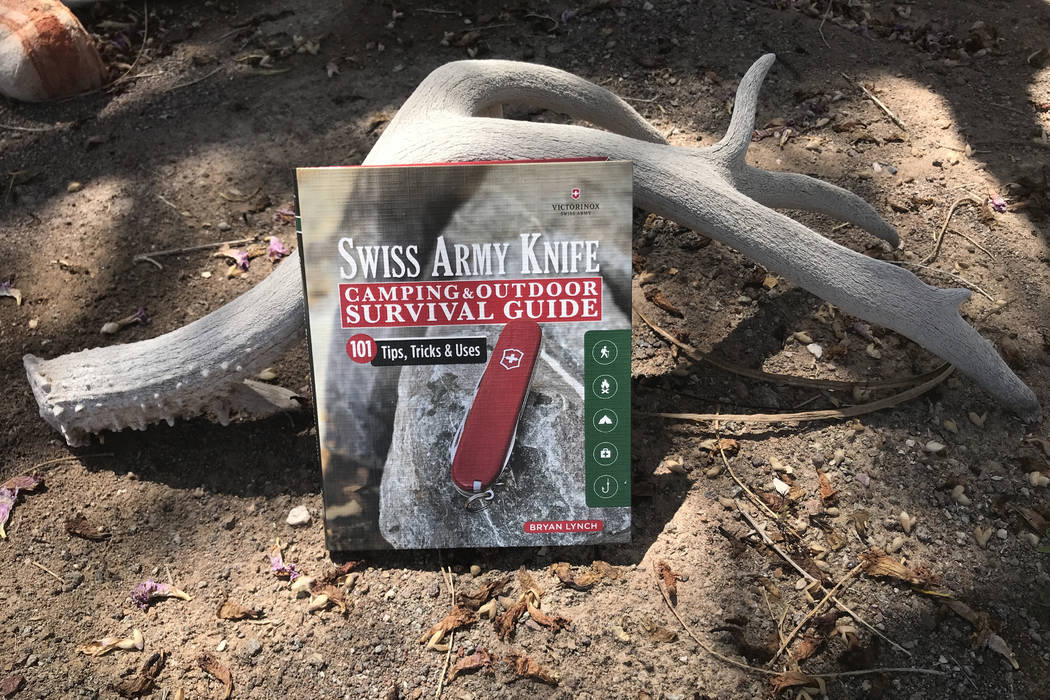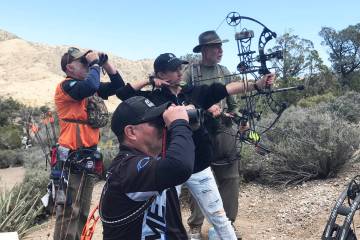Book offers tips on uses for Swiss Army knife
Most outdoor enthusiasts have a list of basic equipment that they never leave home without in case of an emergency.
My collection includes tools for shelter building, making a fire and signaling for help.
One of the tools I carry almost daily since receiving my first one as a gift on my 11th birthday is a pocketknife. Before the advent of high-tech electronics, these tools were a common gift for budding outdoorsmen, and one of the most popular is the Swiss Army knife.
Easily recognized by its red handles and iconic logo — a white cross over a shield — the Swiss Army knife was the original multitool, and many of the kids in my Boy Scouts troop carried one. I remember being a little envious of the multiple tool options their pocketknives had that mine didn’t. Things like a magnifying glass, screwdriver, punch and scissors. And I often wondered about all the things one might be able to do with such a knife.
Thanks to a new book titled “Swiss Army Knife, Camping Outdoor Survival Guide,” I no longer have to wonder. Author Bryan Lynch provides reader with “101 Tips, Tricks Uses” for the knife.
Lynch grew up exploring the woods near his boyhood home in Iowa with a Swiss Army knife in his pocket that was a gift from his father. His experiences laid the foundation for a career writing about survival and emergency preparedness techniques.
As the only official Swiss Army knife survival guide from Victorinox, the knife’s maker, Lynch’s book focuses on using the knife in various survival situations, but the tips can be tailored to just about any quality knife or multitool.
The book is divided into four areas: introduction, preparation, using your knife in the wild and urban uses.
The introduction provides a historical look at the Swiss Army knife and an overview of product offerings. This is the marketing section of the book, but I found the historical information quite interesting.
Unlike many of today’s products that are labeled with marketing terms such as “military grade,” the Swiss Army knife really had its beginnings in the Swiss military.
“The first model, the soldier’s knife, was produced in 1891. It contained a blade, can opener, reamer and screwdriver. It allowed soldiers to service their rifles and open cans of food,” Lynch wrote.
In the preparation section, Lynch teaches the reader how to maintain and use a knife. Again, though his focus is on the Swiss Army knife, the information is applicable to other brands with similar tools.
The meat of the book is found in the third section, “Using Your Knife in the Wild.” It’s broken down into 14 subsections covering such topics as signaling and navigation, making fire, campsite, food preparation, collecting and cleaning water, fishing and even grooming.
Some subsections are extensive, and each lesson provides instructions for completing a project. For example, you will find instructions for making a paracord fishing net and various ways to make a hook. In food preparation, Lynch highlights a variety of options for creating improvised camp stoves.
Urban uses is the shortest of the four main sections. Lynch uses a handful of personal examples to show how a quality knife can be used in situations some people might consider nonsurvival in nature. Those include getting out of a stuck elevator, getting past a broken doorknob and repairing a bicycle.
“Other than your mind,” Lynch wrote, “the knife is the single most important tool to have.”
Freelance writer Doug Nielsen is a conservation educator for the Nevada Department of Wildlife. His “In the Outdoors” column, published Thursday in the Las Vegas Review-Journal, is not affiliated with or endorsed by the NDOW. Any opinions are his own. Find him on Facebook at @dougwritesoutdoors. He can be reached at intheoutdoorslv@gmail.com.






















